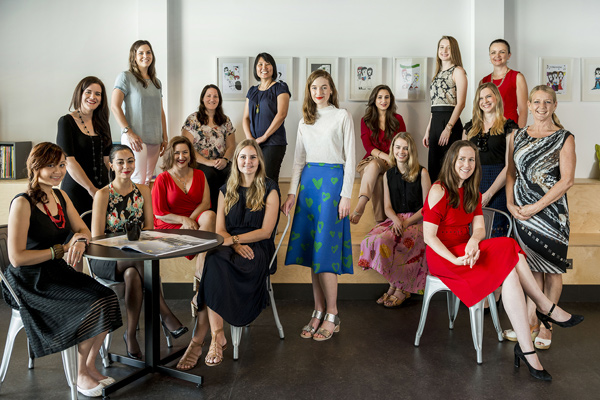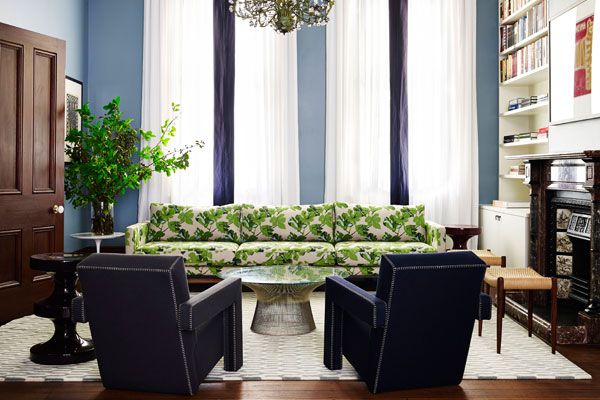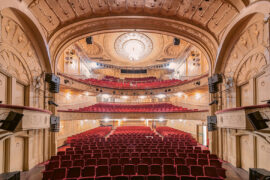Whilst we may be in the midst of the “Asian Century” commentators believe we have embarked on an equally significant era: “the Female Economy”. According to Harvard Business Review, women now drive the world economy, controlling approximately $28 trillion in annual consumer spending*.

February 19th, 2016
Although the market is diversifying, it is rare to see this diversity adopted in the workforce – including the architecture industry. Parlour, Australia’s preeminent advocate for gender equity in architecture has conducted extensive research into the lack of women represented i!n senior positions in the industry.
Parlour’s findings are that there is a striking scarcity of women in senior leadership and management roles in the Architecture industry. Unfortunately, trained women tend to leave the profession by stepping sideways into aligned disciplines or not returning from a career b!reak.
Despite these findings, female architects at Fulton Trotter Architects are making their mark on a number of significant projects, with two of their largest aged care projects led by females. Associate Director at Fulton Trotter Architects, Justine Ebzery says a diverse and balanced team is important to the practice.
“A rounded staff provides us with a range of opinions and attitudes that reflect and represent the community and clients that we design for – particularly in the Aged Care and Education sectors, which have traditionally had a strong female workforce,” says Justine.
Fulton Trotter enjoys a strong female presence with over half their entire workforce comprising of women. Over 60 percent of the firm’s Associates, and 40 percent of Associate Directors are female. Fulton Trotter are committed to supporting women who don’t want to sacrifice a family for their career, nor their career for family.
“We pride ourselves on the diversity of our workforce generally, with a range of cultural backgrounds and ages, not only regarding gender balance. This diversity in our team hasn’t been a conscious decision to meet quotas or targets, but rather a natural consequence of our long standing policy of getting the best people for the job,” she says.
“It is also a reflection of the value placed on people and relationships which is integral to our work culture. We employ the best students and graduates to service our clients’ needs, and work hard to provide a supportive work environment to retain them – I think the retention of our staff is a demonstration of our commitment to these values,” she says.
According to Parlour, the leading architecture firms of the future will overcome the current day-to-day challenges that impact on women in the industry in exaggerated ways, by creating increased flexibility, meaningful part-time work, acceptable career breaks and reasonable hours. This is the ideal for Fulton Trotter, who already provides flexible working conditions to encourage staff to continue advancing their careers whilst taking important time out to pursue family, study or travel goals.
* Harvard Business Review 2009: “The Female Economy” forecast spending
Fulton Trotter
fultontrotter.com.au
Parlour
archiparlour.org
INDESIGN is on instagram
Follow @indesignlive
A searchable and comprehensive guide for specifying leading products and their suppliers
Keep up to date with the latest and greatest from our industry BFF's!

A longstanding partnership turns a historic city into a hub for emerging talent

Australia’s leading design professionals are now invited to enter their most inspiring design projects in the 2015 Australian Interior Design Awards.

In a time of climate emergency, how can cities support and balance the needs of their people and the planet, while ensuring their prosperity?

Above Left and Carpets Inter are firm believers in sustainability at every level of production. The Flatlands collection has now been expanded to encompass stunning new colours which express and protect the beauty of our natural environments.
The internet never sleeps! Here's the stuff you might have missed

Recognised as a winner at the INDE.Awards 2025, Barton Taylor has received The Photographer – Residential accolade. His photographic work on Cake House captures the soul of a coastal icon reimagined, blending light, texture and atmosphere into a compelling visual narrative.

A new book documents the city’s historic building interiors, from 1800s coffee palaces to post-war modernist spaces.